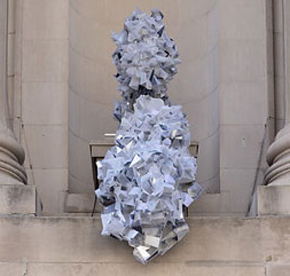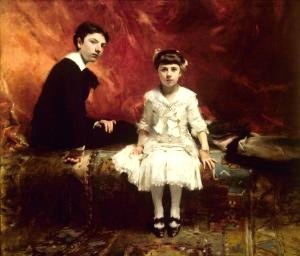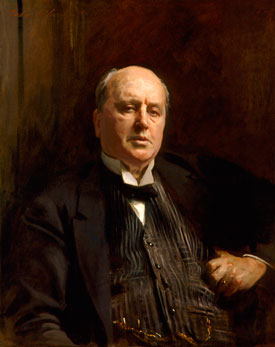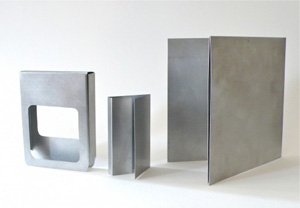8.15.25 — Who Took My Walkman?
To pick up from a past review on nostalgia for a time that still looked with hope to the future, I could never quite love my Walkman. It could not replace my collection of LPs—a sizable shelf apiece for jazz, classical, and rock. It could not match the sound of an LP or even a CD soon to come. But my girlfriend bought it for me, I loved her, and she threw in a tape of the early Beatles, a true game changer in their time but already a distant memory. With its portability, the Walkman promised to be a game changer, too. Who was I to doubt it?
MoMA loves it, too. The 1979 cassette player has entered the collection and now “Pirouette: Turning Points in Design,” through October 18. So why had I forgotten that I ever had one, and how can I fail to name a single other cassette I owned? If this were a turning point,  the worm has turned many times before and since. The iPod, too, is gone, and the name of the game is streaming. Before you know it, AI will be telling you what to hear.
the worm has turned many times before and since. The iPod, too, is gone, and the name of the game is streaming. Before you know it, AI will be telling you what to hear.
The questions in “Pirouette” are built into any museum of modern art, not just the oldest and finest. A museum is about remembering, while modern art, consumer culture, and turning points share a desire to make it new. No critic, however visionary, can say just how or what is to come. MoMA show includes a 1983 Mac, with Susan Kare’s icons for its desktop as a bonus. Surely that if anything was a game changer or was it? It never came close to matching sales for PCs, it leaned heavily on genuine innovations at Xerox, and its white box looks quaint and awkward today.
Still, cool kids loved it, the kind that grew up to become artists and staffers at the Museum of Modern Art. In doing their job as curators, Paola Antonelli with Maya Ellerkmann necessarily exercise their taste in contemporary design. They have to be looking for trends and, with luck, making them. Yet the show has its share of products that are not in the least familiar and do not seem much like turning points. Flasks and carafes from Aldo Bakker, light-weight clothing from Gabriel Fontana, and a faux leather shopping bag from Telfar Clemens look tasteful enough, but they could only wish they had a longer moment in fashion’s sun. DJ gear from Virgil Abloh has to appear only because he was last year’s cool kid himself before his early death.
The show’s biases are not at all easy to pin down. It cannot get enough chairs—stackable plastic chairs, wheeled office chairs, a flax chair, a soft chair, and a knotted chair. More elegant and better known, Charles and Ray Eames have their low, simple profile for a gentle rocker. MoMA relishes digital typefaces as well, but with a quirky selection. One, it insists, is optimized for optical character recognition, as if your phone cannot recognize practically anything today. Retina, a sans serif font by Tobias Frere-Jones, and Oakland, a more patently pixilated one by Zuzana Licko for Emigre Inc., cannot have changed the game half as much as the base fonts in Microsoft Word. But then, just as compared to the Mac, Microsoft was never cool.
MoMA takes a special interest in signage, like the rainbow flag, the NASA logo, Milton Glaser’s I Love New York (with a heart for love), and Shigetaka Kurita’s emojis. A wheelchair icon from the Accessible Icon Project (Tim Ferguson Sauder, Brian Glenney, and Sara Hendren) has signaled reserved parking and access for all. One should be grateful for them all. It also demands the digital image of digital reality, however ugly and obscure. Designs by Fernanda Bertini Viégas and Martin Wattenberg track everything from Web search histories to wind patterns crossing the continental United States. Federica Fragapane’s plot of “space junk” in orbit, might look at home as the backdrop to a dance club.
Still, there are genuine icons of modern and postmodern life along the way. Some stand out for their modesty and might have been there forever, like Bic pens. There really was a Forrest Mars and not the red planet behind Mars candy like colorful M&Ms. One can forget that the @ sign had a creator, Ray Tomlinson in 1971. Other things caught on without exactly entering common use. Know those small six-sided black and chrome expresso makers that depend on water vapor from boiling on the stove? Alfonso Bialetti adapted restaurant pressurizers to the home, and I could not resist buying it, even if I have practically never used it.
So which is it, museum design, contemporary innovation, or the materials of everyday life? The show includes Swatch, but why not the smart phones and exercise phones of today? It has a 1996 flip phone just when, I should have thought, the future of cell phones was already on its way. A hair dryer, from MüXholos, might have been a turning point back in the 1930s, but it bears no resemblance to hair dryers in salons and bathrooms today. What kept me listening to that crummy Walkman anyway? MoMA needs a better dancer for its long-ago pirouette.
Read more, now in a feature-length article on this site.



